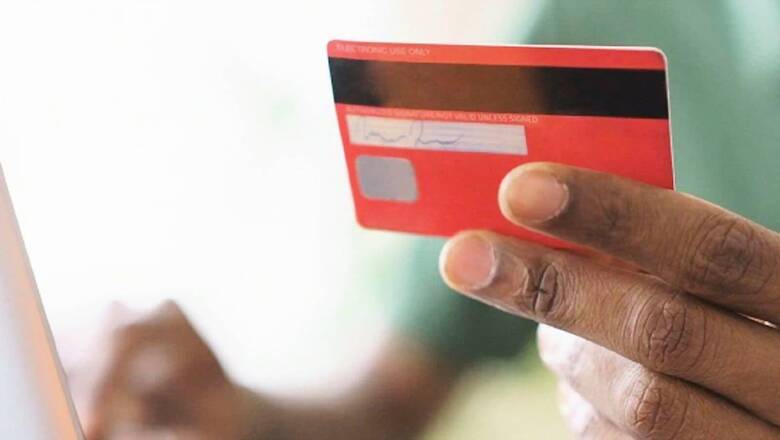
views
When you swipe your card at the local kirana or make an online card transaction, you may have wondered if the cost of the product or service contains additional charges because of the chain of players involved in the payment process. Does the bank, card company, or payment gateway earn from these transactions? Do you pay these costs directly or do merchants take a cut from their earnings on each transaction? How do payments get executed?
All good questions. The digital payments ecosystem has a number of parts, including banks and payment service providers (PSPs), that work in sync. It is an industry that is galloping ahead with innovations as more and more users go online for committing transactions.
If you are wondering how the industry functions, how payments are processed and about the trends shaping the industry, below is an explainer answering all these questions.
The who’s who of payments
Even though a transaction is mainly a debit and credit between two banks, there are many intermediaries that facilitate these transactions. The bank that debits an amount from a customer is known as the issuer bank. At the other end is the acquirer bank, or the merchant’s bank, which credits the amount on receipt.
Merchants refer to your local stores, mall outlets and so on as well as e-commerce websites and other service providers that operate on online purchases such as Amazon, Flipkart and Zomato, among others.
One of the key components that aid transactions apart from banks are the card networks such as Visa, Mastercard and RuPay. They provide customers with debit, credit cards and extend offers on using these cards in tie-ups with banks.
Then come the payment service providers (PSPs) that act as a bridge between the banks of a customer and a merchant. In the physical world, a Point of Sales (PoS) machine provider facilitates these transactions. Companies that provide PoS payment services include Innoviti Payment Solutions, Pine Labs, Paytm etc. For online transactions, payment gateways such as PayU, Razorpay, BillDesk act as the third-party players which execute transfers securely.
The umbrella entity National Payments Corporation of India (NPCI) is also a chief component of India’s payment ecosystem as it operates the Unified Payments Interface (UPI) that facilitates instant transactions and settlements. The process of executing these transactions from end to end is also known as switching, which is done by NPCI as well as PSPs.
Digital transactions in the online and physical world are basically the journey of money between an issuer bank and the acquiring bank.
Digital transactions in the online and physical world are the journey of money between an issuer bank and the acquiring bank.
How your money travels
Digital transactions in the online and physical world are basically the journey of money between an issuer bank and the acquiring bank. A lot of pieces come together like clockwork to ensure that your money makes it from one end of the tunnel to another in a secure manner (See above picture).
The first step of the transaction is the customer when they consent to pay the merchant. In case of an online transaction, a payment request is then sent from the merchant’s website to the payment gateway it has tied-up with.
Hereon, it is the payment gateway’s job to handle customer card details, seek authorisation through an OTP or PIN from the customer, accept the amount from the issuer bank and settle the amount with the acquiring bank. The gateway also must perform the job of first checking the balance in the customer’s account with the issuer bank and then either proceeds with authentication or rejects the request in case of insufficient balance or wrong cards details.
In the case of a credit card, it also verifies the available credit limit with the card network before proceeding with the transaction.
For physical card payments, it is the PoS provider that does the job of checking for sufficient balance, credit limit with the customer’s bank and card provider. It then seeks authentication through a PIN from the customer before proceeding with receipt and execution of the fund transfer.
When it comes to UPI transactions, banks and apps like PhonePe, Paytm, Google Pay etc facilitate the payments through their apps or QR codes and NPCI provides online transaction routing, processing and settlement services for these apps and customers.
Credit Card charges
You may know this already. Among all the forms of digital payments, credit cards draw the highest charges.
However, it is not the customer that has to bear them but the merchant. These charges are divided among the banks and payment service providers and are collectively called Merchant Discount Rate (MDR).
What is the charge for your transaction? Well, it differs across platforms, types of transactions, and can increase if more features are added. However, the range is between two and three percent.
For example, in a credit card transaction worth Rs 100, the merchant forgoes Rs 2, which is then divided among payment ecosystem players (See above picture). Of the Rs 2, the issuing bank bags 1.25 percent and acquiring bank 0.25 percent.
Card networks take a network or interchange fee of 0.15 percent and payment service providers like Paytm, Google Pay, PhonePe take 0.25 percent. The last 0.10 percent is for the PoS machine provider or payment gateway.
However, in many instances merchants pass on these charges to customers asking them to shell out two percent extra to accept credit cards. This is seen especially in small stores which have to bear two percent on already low-value transactions. According to norms of the Reserve Bank of India (RBI), merchants are not supposed to pass on charges to customers.
Raja Gopalakrishnan, Executive Vice President of Global Real Time Payments, at FIS said, “There are plenty of situations where you will see that the customer is asked to pay extra. The RBI has mandated from time to time that interchange fees should be reduced so that credit card payments can be democratised far more.”
Debit card payments
As for debit cards, RuPay cards attract no charges as they fall under the government’s Zero-MDR policy. What is this policy? It mandates that merchants should not be levied any charges to accept payment through this mode.
Visa and Mastercard debit cards however attract MDR in the range of 0.4 to 0.9 percent which is shared among the acquirer and issuer banks.
UPI transactions
UPI, like RuPay debit cards, falls under the Zero-MDR norm. With a share of 50 percent in Indian retail digital payments, UPI is driving digital acceptance in the country.
Although UPI players do not make any revenue through transactions, it is helping fintechs cross-sell other revenue-generating offerings on their platforms. These include financial services such as insurance, mutual funds, stockbroking, fixed deposits, billing and ticketing.
In an attempt to provide remuneration to banks and UPI apps, the government has now floated a Rs 1,300 scheme under which it will reimburse MDR for RuPay debit card transactions and UPI transactions up to Rs 2,000.
The future of payments in India
The year 2021 turned out to be historic for UPI with monthly transaction values doubling from Rs 4 lakh crore in January to Rs 8.26 lakh crore (over $100 billion) in December. One of the key trends going forward will be the continued growth of UPI’s share in overall retail transactions in India.
Vivek Iyer, Partner and Leader – Financial Services Risk Advisory at Grant Thorton Bharat said, “UPI offers customer convenience that has never been experienced before in another payment mode. For example – the time taken to remove the cash from a wallet is twenty percent more than the time taken for a UPI payment to go through.”
The way debit and credit card transactions are done will soon witness a sea change with RBI setting the June 30, 2022 deadline for tokenisation. Card details will not be stored on websites and a token number that represents encrypted card details will be used instead.
RBI’s plans to form a New Umbrella Entity (NUE) on the lines of and also to rival NPCI will help boost the payments ecosystem in India and increase the bandwidth of transactions that the economy can handle as a whole.
“We should watch out for the new umbrella entity on payments as that will usher in an era of innovations that no one has imagined till now,” Iyer said.
2022 is also an important year for wallets as RBI has mandated interoperability starting financial year 2023, meaning customers will now be able to move money from one wallet to another.
Besides this, the Central Bank Digital Currency (CBDC) will usher in a new era in digital payments and transactions. However, further clarity is awaited from RBI on what model will be adopted to implement CBDC in India.
Read all the Latest Tech News here


















Comments
0 comment